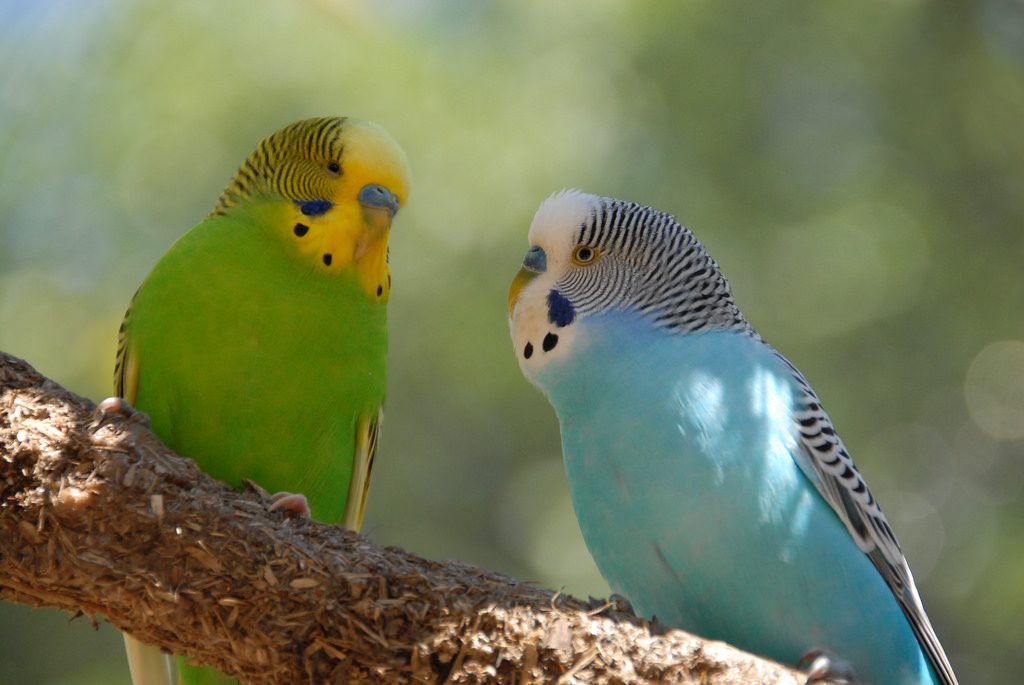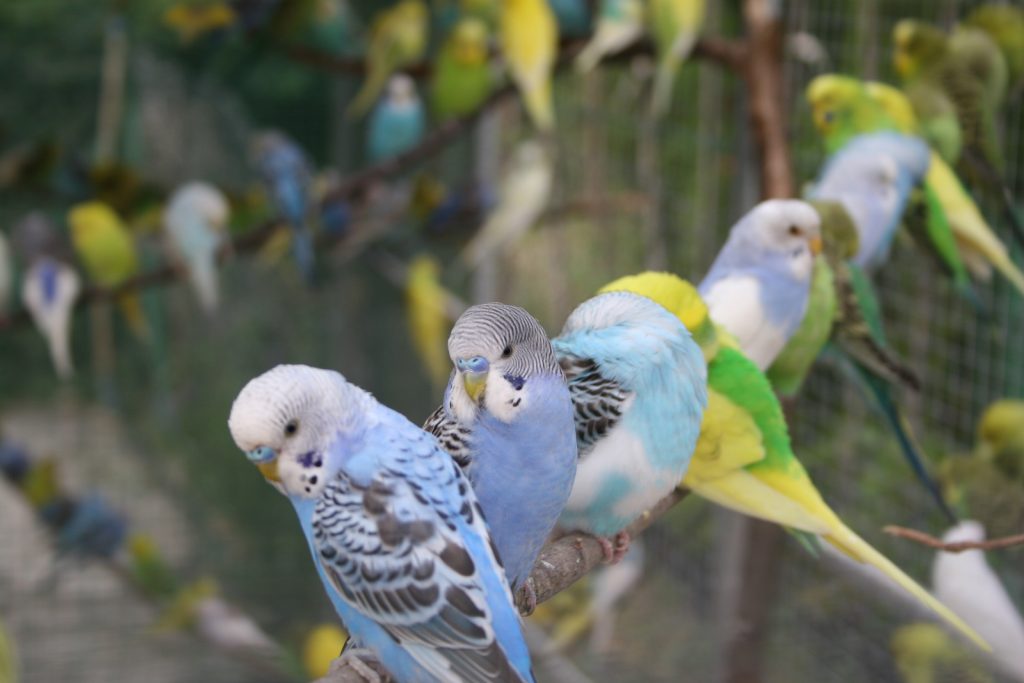The budgerigar; known also as the shell parakeet, common pet parakeet or simply the budgie, is a small parrot native to inland Australia. They are ranked as the third most popular pet in the world thanks to their low cost, low maintenance, hardiness, ease of breeding and excellent human speech mimicking ability.

There are a numerous different types of budgies available in the pet trade, including larger “club” budgies, “wild type” budgies; plus dozens of different color mutations that have been established.
Diet & Feeding/h3>
A quality small parrot seed mix forms the basis of the budgie’s diet. Seed should be stored in an airtight plastic drum to prevent exposure to vermin and moisture. It can be soaked or sprouted to improve its nutritional value.
A good diet includes a mix of fruits and vegetables, such as apple, pear and corn. Leafy green vegetables are essential; silverbeet (chard), bok choy, kale and endive are particularly enjoyed.
Many breeders prefer to feed pellets instead of seed. Pellets provide a more balanced intake of vitamins and minerals and produce less waste. Commercial supplements such as egg & biscuit mix can be added to the diet to provide additional protein during the breeding season.
Housing & Compatibility
Budgies can be kept in a wide variety of different aviary types, including cages, traditional aviaries and suspended flights. An adequate amount of flying space is necessary to ensure good fitness and minimal stress.
Budgies are known to behave aggressively in colonies, so multiple perches and sight barriers should be used to allow them to escape one another. Breeding budgies should not be housed with any other species of bird, as they will likely harass or kill them during territorial disputes.
Non-toxic leaves and branches should be provided for chewing. They will be destructive to foliage in a planted aviary.
Undomesticated budgerigars (sometimes called “bush budgies”) are known to be less aggressive than their domesticated counterparts. With caution, they can be housed with other finches or small parrots in a very large (in excess of 250 square feet) planted aviary.
Breeding
Budgies are prolific and opportunistic breeders. A pair will breed throughout the year if conditions are maintained, so it’s sometimes necessary to remove nests to prevent the hen from suffering health consequences related to overbreeding.

Hollow logs or commercial “budgie sized” nest boxes should be provided for breeding. Multiple should be placed throughout the aviary to allow the birds some degree of choice on size and location. Domesticated budgies are generally poor nest builders and will lay their eggs on a bed of shaved pine or sawdust.
The hen will lay 4-6 eggs and incubate them herself for 18 days. Young birds will fledge approximately a month after hatching and become fully independent in the following week or two.
Health
Budgies are hardy and resilient birds, however poor hygiene or overcrowding can lead to sickness and death. Water bowls should be cleaned daily and droppings should be removed frequently.
A strict worm control regime and regular preventative treatment for bacterial and fungal infections is critical to ensure the long-term health of any bird.
A well-cared for budgerigar should live between 6 and 10 years.